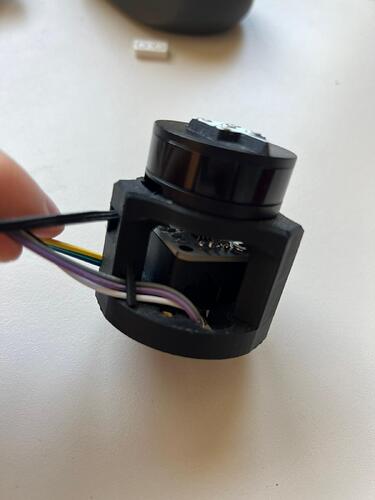My goal is to create a gimbal to hold a sensor array that is looking at/tracking an object. Pan up/down, spin left/right. I am new to FOC, but not electrical engineering. My MCU will be the ESP32-S3, the sensor array will be ~120g (with one of the gimbal motors inside it).
I am going for smooth, slow motion.
I do not need it to be very strong/high torque (I think).
I have been looking at 2804 sized gimbal motors. Also some 2208 ones. I intend to do a closed loop setup (two INA240 current sensors per gimbal) with encoders.
Things I am confused on that I hope someone can point me in the right direction:
- Encoders, they seem to vary in price a lot.
- Drivers, the SparkFun board I got uses the TMC6300 vs the TI DRV8313, I am going for a lower power system (2S Lipo battery ~7.4v), any concerns with the TMC?
- AS5600 vs AS5048a, again a price difference, some accuracy (12bit vs 14bit) I am not sure that is super important in my application. (and one is I2c and one is SPI)
- Also the SparkFun board uses TMAG5273 Hall effect sensor, but I have seen negative thoughts on this for a gimbal, not sure why tho.
- I2C vs SPI vs PWM - Most off the shelf gimbal motors + encoders seem to use the above two chips but in PWM mode. In practice is this fine? crappy?
- Heat - Ideally I want this to be slow and smooth, the sensor array will be balanced, I am thinking just low current should be fine here, if something pushes back I just want it to give up.
- ESP32-S3, does it generally work well if it is multitasking a bit? I can make dedicated thread for it.
- Is it worth using an off the shelf gimbal + encoder or should I just make my own encoder board setup? I am assuming most do not have the magnet needed so I will need to add that in the shaft.
- Lastly any advice on gimbal size / kV / turns? I have seen some small low kV, various turns, I feel this is all a balance I am not yet understanding.
Appreciate any guidance or pointing me in the right direction to find it!!
Ryan
